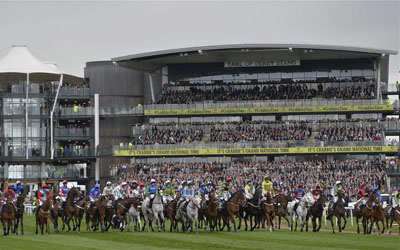Jockey Club Racecourses to Increase Prize Money to £20.9m in 2016
January 7, 2016
Jockey Club Racecourses has announced plans to make a record financial contribution to prize money of £20.9 million in 2016, prostate which represents an increase of £1 million year-on-year.
The UK racecourse group also confirmed it delivered on its promise to contribute a record £19.9 million into prize money in 2015, buy within record total prize money distributed at its 15 tracks of £43.9 million across 336 fixtures at an average of more than £130,000 per card.
In budgeting to increase its prize money funding in 2016 to the largest amount ever contributed by a racecourse group, the owner of the likes of Aintree, Cheltenham, Epsom Downs and Newmarket racecourses will see its prize money contribution exceed £20 million for the first time.
These plans also mean The Jockey Club will have grown its prize money contribution by 61% since 2010, when it contributed a then-industry-record £13 million. Between 2010 and 2015 the group has injected more than £103 million into prize money from its resources.
Paul Fisher, Group Managing Director of Jockey Club Racecourses, said: “In 2016 Jockey Club Racecourses will once again contribute the maximum our profits allow into prize money, because we recognise it is essential for competitiveness, provides a return to owners investing in our sport and is vital to the livelihoods of the many thousands of people who work in British Racing.
“We have maintained this maximum contribution approach for many years, which is why we have a prize money agreement with The Horsemen’s Group at Premier level and were delighted to contribute a record amount last year in the course of living up to our commitments.? Our planned increase comes without any new boost from media rights; it’s down to our teams working really hard to grow our business so we can reinvest and the support of sponsors who play an important role in our sport.
“We feel we are holding our end up and doing everything we can for British Racing, including attracting record crowds last year. So to suffer a significant drop in industry funding for prize money is particularly disappointing and should only strengthen our sport’s resolve in the need to address this for the long-term health and prosperity of the nation’s second-biggest spectator sport.”
{jcomments on}


